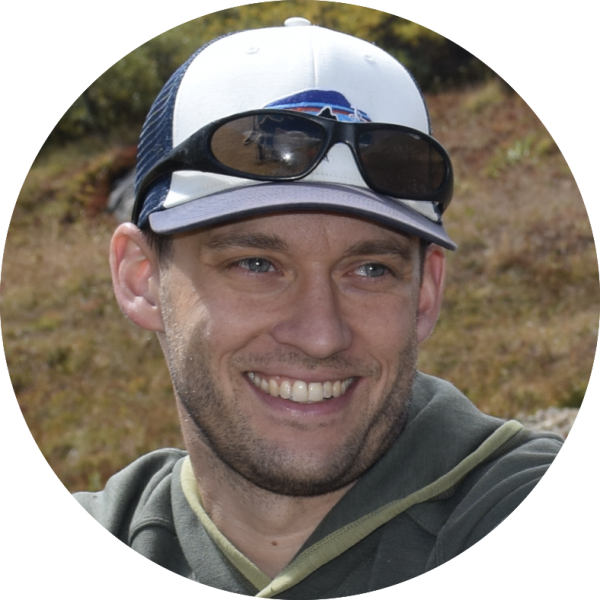Our Faculty Fellows govern the institute and help lead INSTAAR's research and education missions. Reach out to individual fellows for information about joining INSTAAR, especially if you are a prospective student or staff member. INSTAAR's Interim Director is Nikki Lovenduski.

Robert S. Anderson
Distinguished Professor • • Geomorphology
Geological Sciences • Hydrologic Sciences Graduate Program

Suzanne Anderson
Professor • • Geomorphology • Weathering • Hydrology
Geological Sciences • Hydrologic Sciences Graduate Program

Holly R. Barnard
Associate Dean of Research • Professor • Co-Director, Hydrologic Sciences Graduate Program • PI, Critical Zone Dynamic Water • • Ecohydrology • Tree physiology • Stable isotope geochemistry
Geography • Hydrologic Sciences Graduate Program

Cassandra Brooks
Assistant Professor of Environmental Studies • • Marine science • Environmental governance • Antarctica
Environmental Studies

Sarah Elmendorf
Research Associate •
• Plant ecology • Climate change • Tundra
• Plant ecology • Climate change • Tundra
Ecology and Evolutionary Biology

Alan Fried
Senior Research Associate • • Atmospheric processes • Chemical transformations • Advanced laser technology
Atmospheric and Oceanic Sciences

Michael Gooseff
Associate Dean for Research, College of Engineering • Professor • Co-Director, Hydrologic Sciences Program • PI, McMurdo Dry Valleys LTER • • Stream-groundwater interactions
Civil, Environmental and Architectural Engineering • Hydrologic Sciences Graduate Program

Alexandra Jahn
Associate Professor • • Climate modeling • Cryosphere • Oceanography
Atmospheric and Oceanic Sciences

Anne Jennings
Senior Research Associate • Editor, Arctic, Antarctic and Alpine Research • • Arctic paleoclimate & paleoceanography • Ice-sheet/ocean interactions • Foraminifera

Tyler Jones
Assistant Research Professor • • Polar ice cores • Permafrost • Glaciology • Abrupt climate change

Albert J. Kettner
Associate Professor, Research • Associate Director, INSTAAR • Director, DFO Flood Observatory • • Hydrology • Sediment transport • Flooding • Numerical modeling

Jianghanyang (Ben) Li
Assistant Professor •
• Atmospheric chemistry • Stable isotope geochemistry
• Atmospheric chemistry • Stable isotope geochemistry
Atmospheric and Oceanic Sciences

Nikki Lovenduski
Associate Professor • Interim Director, INSTAAR • • Marine carbon cycle • Climate variability • Ocean modeling
Atmospheric and Oceanic Sciences • Graduate Certificate in Oceanography

Tom Marchitto
Professor • Associate Director of Laboratories, INSTAAR • Director, ICP-MS Trace Metal Laboratory • • Paleoceanography • Paleoclimatology
Geological Sciences • Atmospheric and Oceanic Sciences

Bradley Markle
Assistant Professor • • Isotope biogeochemistry • Paleoclimate and climate dynamics
Geological Sciences

Diane M. McKnight
Distinguished Professor • • Limnology • Biogeochemistry of lakes and streams
Civil, Environmental and Architectural Engineering • Environmental Studies • Hydrologic Sciences Graduate Program

Gifford H. Miller
Distinguished Professor • Director, Center for Geochemical Analysis of the Global Environment (GAGE) • • Quaternary stratigraphy • Geochronology • Paleoclimatology
Geological Sciences

Noah P. Molotch
Associate Professor • • Surface water and snow hydrology • Remote sensing • Ecohydrology
Geography • Hydrologic Sciences Graduate Program

Julia Moriarty
Assistant Professor • • Coastal oceanography • Numerical modeling • Sediment transport • Biogeochemistry
Atmospheric and Oceanic Sciences

Keith Musselman
Assistant Professor • • Hydrology • Climate change • Hydrometeorology • Remote sensing • Modeling
Geography

Astrid E. J. Ogilvie
Senior Research Associate • Senior Scientist, Stefansson Arctic Institute, Iceland • • Human ecology of Arctic and subarctic regions
Environmental Studies

Isabella A. Oleksy
Assistant Professor • • Limnology • Biogeochemistry • Ecosystem ecology
Ecology and Evolutionary Biology

Irina Overeem
Associate Professor • Deputy Director, CSDMS • • Earth surface process modeling • Coastal and river geomorphology
Geological Sciences

Scott D. Peckham
Research Associate • • Hydrology • Geomorphology • Modeling • Cyberinfrastructure

W. Tad Pfeffer
Professor • • Glaciology • Sea level rise • Geophysical & architectural photogrammetry
Civil, Environmental and Architectural Engineering • Hydrologic Sciences Graduate Program

Shaily Rahman
Assistant Professor • • Isotope biogeochemistry • Chemical oceanography • Global geochemical cycles
Geological Sciences

Tim Seastedt
Professor Emeritus • • Terrestrial ecosystem ecology • Grassland ecology • Plant-soil-animal interactions
Ecology and Evolutionary Biology

Julio Sepúlveda
Associate Professor • Assistant Director of JEDI, INSTAAR • • Biogeochemistry • Geobiology • Biomarker research • Paleoclimate & paleoceanography
Geological Sciences

Sarah Spaulding
Research Associate • Ecologist, U.S. Geological Survey • • Diatoms • Biogeography • Paleoecology

Robert F. Stallard
Professor Adjoint • Scientist Emeritus, U.S. Geological Survey • Research Scientist, Smithsonian Tropical Research Institute, Panama • • Biogeochemistry • Hydrology
Environmental Studies

Katharine Suding
Distinguished Professor • PI, Niwot Ridge LTER • • Plant community ecology • Restoration and conservation • Invasion biology
Ecology and Evolutionary Biology

Scott Taylor
Associate Professor • Director, Mountain Research Station • • Evolutionary ecology • Population genomics
Ecology and Evolutionary Biology

Bruce H. Vaughn
Research Associate • Manager, Stable Isotope Lab • • Isotopic analysis in global change • Carbon cycle • Instrument development

James W. C. White
Craver Family Dean, College of Arts & Sciences, Univ. of North Carolina at Chapel Hill • Fellow in absentia • • Global change • Paleoclimate dynamics • Biogeochemistry


